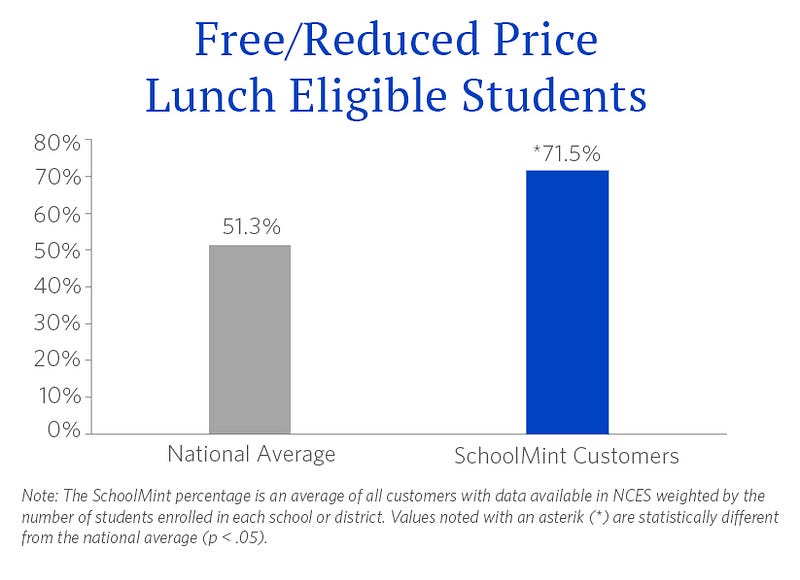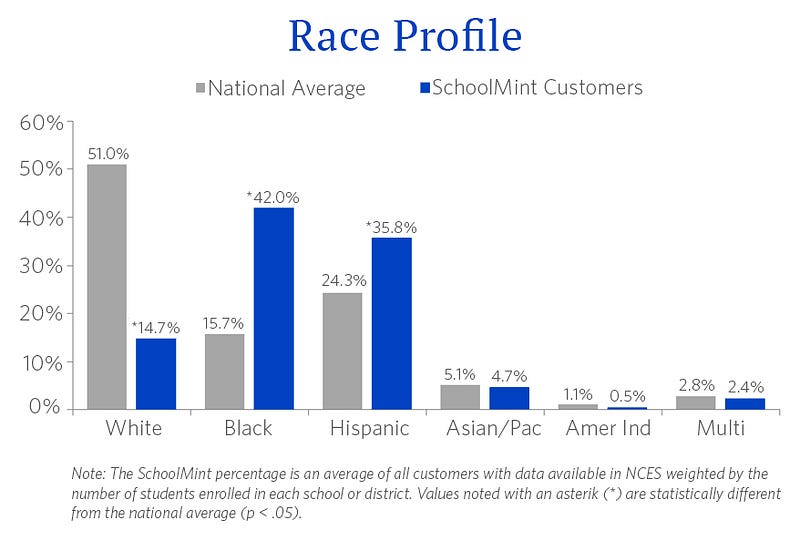by Shauntel Poulson
As of 2015, about 13% of Americans with an annual household income of less than $30k per year are smartphone-dependent, defined as having “neither traditional broadband service at home, nor easily available alternatives for going online other than their cell phone,” including 12% of African Americans and 13% of Latinos. 1 As dependence on smartphones becomes more prevalent, we are seeking edtech solutions that embrace this trend. We invested in SchoolMint largely because they are building a solution for the millions who rely on their cellphone as their lifeline to the internet.
SchoolMint provides schools and families with an easy-to-use and efficient school enrollment and communication system. Jinal Jhaveri and Forum Desai were inspired to found SchoolMint after going through the nightmare of enrolling their child in school, a lengthy process that entails completing piles of paperwork and multiple trips to the school. School enrollment is a pain point felt by nearly all families but disproportionately affects low-income families who have to miss days of work and often lack workplace flexibility.
Today, SchoolMint is supporting enrollment for charter schools as well as districts like Oakland, Camden, Cleveland, and Indianapolis and helping millions of families successfully navigate the enrollment process. Their native Android and iOS applications enable families to create and manage applications for multiple children to multiple schools, all from their smartphone. The company estimates that 40% of users access their tools exclusively through mobile. Christina Brown, New York City Charter School Center chief operating officer, sites mobile support as a key factor in selecting SchoolMint as their enrollment solution:
“SchoolMint’s mobile solutions were a significant factor in our decision. The majority of New York City families applying to charter schools not only own mobile phones, but rely on them for daily access to critical services.”
Since a higher proportion of low-income, Black and Hispanic families are smartphone-dependent, we were curious if SchoolMint’s user demographics would reflect this fact given their high mobile usage. In partnership with Empirical Education, we designed a service to help our portfolio companies determine the demographic breakdown of their users as compared to the national average of US K-12 public school students. Not surprisingly, we found that SchoolMint is serving a higher percentage of low-income, Black, and Hispanic students as shown in the charts below.


Some still argue that edtech is primarily serving the affluent . SchoolMint is a great example to the contrary — the proof is in the demographic user data. It’s not just reaching the most underserved, it’s helping those families make more informed decisions about their children’s education. We are excited to back SchoolMint and hope to invest in other edtech companies that are making design decisions to broaden the REACH of their solutions.
1 Smith, Aaron. “U.S. Smartphone Use in 2015.” Pew Research Center Internet Science Tech RSS. April 1, 2015. Accessed December 8, 2015.http://www.pewinternet.org/2015/04/01/us-smartphon….

